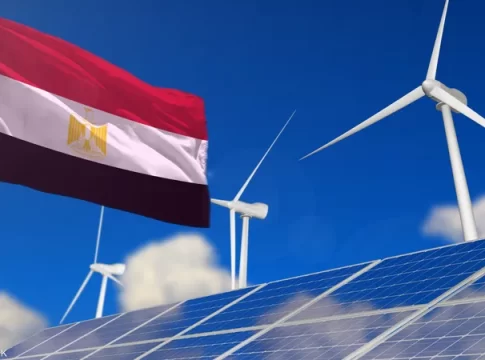Egypt is intensifying its transition toward renewable energy, with solar power playing a pivotal role in the country’s ambitious strategy to meet 42% of its electricity needs from green sources by 2030. This shift is part of the Integrated and Sustainable Energy Strategy, first adopted by Egypt’s Supreme Energy Council in 2016 and now gaining renewed momentum amid global and domestic pressures to accelerate climate action and energy diversification.
According to a newly published report by the Information and Decision Support Center (IDSC), the so-called “yellow economy”—a reference to Egypt’s burgeoning solar sector—is poised to become a cornerstone of national energy policy and economic growth. The report outlines a detailed roadmap for expanding solar energy’s share to over 26% of the electricity mix within the decade, including 21.3% from photovoltaic (PV) systems and 5.52% from concentrated solar power (CSP).
To achieve these goals, Egypt has implemented a comprehensive package of regulatory and institutional frameworks, including feed-in tariffs, licensing reforms, and public-private partnerships aimed at lowering barriers for investors and accelerating solar adoption across industrial, residential, and commercial sectors.
Dr. Ayman Hamza, spokesperson for Egypt’s Ministry of Electricity and Renewable Energy, noted that the country is “at a pivotal moment,” adding: “Solar power is not just an energy solution, it’s an economic catalyst that can drive employment, investment, and innovation in every governorate.”
The strategy’s revision is expected to raise the renewable energy target to 65% by 2040, aligning Egypt’s vision with broader global decarbonization goals and strengthening its leadership in the Middle East and North Africa (MENA) region’s clean energy race.
One of the strategy’s flagship achievements is the Benban Solar Park, one of the world’s largest solar farms, located in Aswan. The facility alone is capable of generating 1.8 GW of power, providing clean electricity to over one million homes and serving as a model for public-private investment in renewable infrastructure.
Global energy analysts say Egypt’s momentum could attract significant foreign investment, particularly from Gulf countries, Europe, and Asia, all eager to back scalable solar projects in a geopolitically strategic location with abundant sunlight and government support.
“Egypt is uniquely positioned to be a solar energy exporter to Africa and Europe via the interconnected grids,” said Dr. Leila Farouk, an energy economist at the Regional Center for Renewable Energy and Energy Efficiency (RCREEE). “The IDSC report shows that with the right policies, Egypt’s solar economy could rival traditional energy exports in terms of long-term value.”
As the global demand for clean power continues to grow, Egypt’s proactive solar push is not only addressing domestic energy security concerns but also creating new opportunities for tech-driven job creation, local manufacturing of solar components, and enhanced energy diplomacy in an increasingly competitive global marketplace.
With more than 12 hours of daily sunlight in most regions and falling costs of PV technology, experts say Egypt’s yellow economy is no longer a distant aspiration—but an increasingly powerful engine for sustainable development.


